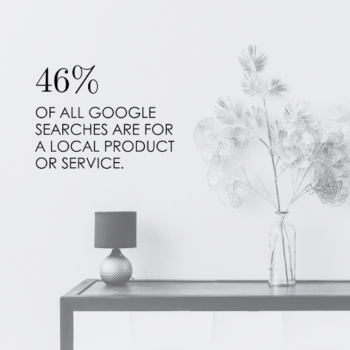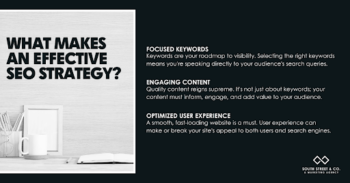TABLE OF CONTENTS
Our Orlando website SEO audit services offer invaluable insights into the optimization of your website as well as actionable steps you can take to improve its performance.
Optimizing your website for search engines is critical if you want to appear when people search for the product or
How can our Orlando website SEO audit service help? I’m glad you asked! We walk through your entire website and evaluate each component of your SEO. We then provide you with actionable recommendations and the steps you need to take to improve your rankings on search engines like Google and your overall website performance. Let’s take a closer look at what this includes.
What Does A Website SEO Audit Service Look For?
Technical SEO
Technical SEO is optimizing a website’s technical aspects to improve its visibility on search engine results pages. Key areas of focus in technical SEO include improving website speed, ensuring it is mobile-friendly, securing it with HTTPS, optimizing its structure and URLs, and implementing structured data to help search engines interpret and display content more effectively.
What We Look for in a Technical SEO Evaluation
Crawlability and Indexability
Websites that are easier to crawl (meaning search engines can efficiently discover and index their pages) rank better on search engines. During our technical SEO evaluation, we identify and diagnose any issues that might prevent search engines from effectively crawling your website.
Robots.txt Files: We examine the robots.txt file to ensure it’s correctly guiding search engine bots on which pages to crawl and which to avoid. This file plays a crucial role in managing crawler access to your site.
XML Sitemaps: We check for the presence and correctness of XML sitemaps, which are essential for search engines to understand your site structure and efficiently index all relevant pages. We ensure your sitemap is up-to-date and submitted to major search engines.
404 Errors and Redirects: We identify broken links, 404 errors, and improper redirects that can disrupt the crawling process and negatively impact user experience.
Canonical Tags: We review the use of canonical tags to prevent duplicate content issues and ensure search engines index the preferred versions of your pages.
Page Speed: We analyze page load times, as faster-loading pages are more easily crawled and provide a better user experience.
Mobile Friendliness: With the mobile-first indexing approach of search engines, we assess how well your website performs on mobile devices, ensuring it’s easily crawlable and indexable on mobile as well as desktop.
Security
Hypertext Transfer Protocol Secure (HTTPS) is the secure version of HTTP and is a safeguard for the exchange of information between a user’s browser and the website they are visiting. This advanced protocol encrypts data to shield against unauthorized interceptions and attacks such as eavesdropping, man-in-the-middle (MitM) assaults, and domain name system (DNS) spoofing.
It’s very simple to see if a website has HTTPS vs. HTTP; a secure URL should begin with “https” rather than “http.”
Beyond its primary function of enhancing security, HTTPS is also a critical part of SEO. Search engines like Google use HTTPS as a ranking signal, favoring secure websites in search results. If your website doesn’t currently use HTTPS, we can fix that for you.
On-Page SEO Analysis
Following our analysis of the technical SEO of your website, we’ll move on to on-page SEO. Most of what your website visitors see when they look at your website falls under on-page SEO, so it’s important that it looks good. Here’s what we look for as part of an on-page SEO analysis.
Content Quality: Let’s be honest; we’ve all read bad content. Over the years, Google has made purposeful steps to improve user experience for people using its search engine, and one of those steps has been regular helpful content updates. These updates ensure that the content (like your website) they are serving to Google users is both high-quality and useful to the user.
This is why your content needs to be on point. Grammar, formatting, information, research, and everything else written on your website need to be done well. In addition to quality content, we’re looking for a few other things during the on-page SEO analysis.
Meta Tags and Headings: Meta descriptions are relevant summaries of the content people might expect to find on a web page. They are a preview of the content that is served on search engine results pages.
Headings organize your content and help users navigate through each page quickly if they are looking for specific information. The words used in your headings and how your content is laid out are important for SEO because they tell Google and other search engine crawlers what your site’s most important content is.

Image Optimization: Image optimization is crucial to on-page SEO and overall website performance. You can optimize your images by using alt attributes and optimized image sizing.
Alt attributes, also known as alt tags or alt text, are brief descriptions added to the HTML code of an image on a website. Alt text is important for visually impaired users who rely on screen readers to navigate the Internet. The alt attribute provides these users with a textual description of the image, ensuring they don’t miss any content. Alt tags also help search engines better understand the content of your image.
Image size optimization helps with page speed, improving load times for better user experience.
Internal Linking Structure: Internal linking plays a pivotal role in enhancing site navigation and distributing link equity, which refers to the SEO value passed from one page to another. During an SEO audit, internal links are assessed to ensure they are strategically used to guide users and search engines through a website’s hierarchy, connecting relevant content in a meaningful way. This practice not only improves the user experience by making information easily accessible but also boosts the SEO performance of individual pages.
Off-Page SEO Assessment
Off-page SEO is everything that impacts your website SEO but isn’t actually on your website. This includes backlinks (other websites that link back to your website), local SEO, and social media presence. When we analyze your off-page SEO, this is a bit of what we look at:
Backlink Profile Analysis: We use a variety of software tools to take an in-depth look at your site’s backlinks. What we’re looking for is the overall quality of the links. Does the website linking to your website have a lot of authority in your industry? Are the links follow or nofollow? What kind of anchor text is used? Websites with more authority (like a .gov website) are always better to get backlinks from than more spammy websites with no legitimate traffic.
Local SEO: Part of local SEO is on-page, using keywords and other tools to optimize your website for local searches. The off-page portion includes local citations and Google Business Profile optimization.
Local Listings and Citations: Ensure your business is listed in local directories and on major platforms like Yelp and TripAdvisor. Maintaining consistency in your business’s name, address, and phone number (NAP) across these listings is crucial.
Google Business Profile: A Google Business Profile (GBP) allows businesses to manage their online presence across Google, including Search and Maps. During our website SEO audit service, we’ll look for a few things in your GBP.
Complete and Accurate Information: Every section of the GBP is filled out, including the business name, address, phone number, and hours of operation.
Categories and Attributes: Attributes and business categories highlight features of your business, such as “free wi-fi” or “outdoor seating.”
High-Quality Photos and Videos: You’re regularly posting high-quality images and videos to showcase your business. Businesses with photos receive more requests for directions and more clicks through to their websites.
Posts and Updates: You’re using the posts feature to share updates, offers, events, and more. This keeps your listing active and engaging for potential customers.
Q&A Section: The Q&A section of your GBP is being monitored and questions are responded to. This provides valuable information to potential customers and demonstrates active engagement.
Social Media Presence: A website’s integration with social media can impact SEO by driving traffic, increasing brand visibility, and enhancing content distribution, which indirectly contributes to a website’s search rankings. Moreover, social signals, such as likes, shares, and comments, can also serve as indicators of content quality and relevance, potentially influencing search engine algorithms.
User Experience (UX) and Accessibility
Usability Testing
Usability testing focuses on evaluating how user-friendly and intuitive a website is from the perspective of an average visitor. This identifies various usability issues that could hinder user engagement, leading to higher bounce rates and lower conversion rates. Key areas of focus during usability testing include:
- Navigation structure
- Page load times
- Mobile responsiveness
- Clarity of calls-to-action
- And more
By simulating real user interactions, the audit can uncover obstacles preventing users from easily accessing information or completing desired actions, such as purchasing or signing up for a newsletter. Addressing these issues is crucial for enhancing the overall user experience, which in turn encourages longer visit durations, more interactions with the site, and, ultimately, better SEO performance.
Accessibility Evaluation
An accessibility evaluation looks at how well a website can be used by people with disabilities, including those who rely on assistive technologies to navigate the internet.
Following the Web Content Accessibility Guidelines (WCAG) is essential for creating an inclusive digital environment that accommodates users with a wide range of disabilities, such as visual, auditory, physical, speech, cognitive, language, learning, and neurological disabilities.
We examine various web design and content aspects, including color contrast, keyboard navigability, alt text for images, and proper use of headings and labels for screen readers. Ensuring accessibility broadens your site’s audience and positively reflects your brand’s values. Accessible websites also tend to have better structure and usability, which can enhance SEO by making content more digestible for both users and search engine crawlers.
Insights and Reporting
A website SEO audit service wouldn’t be worth much if you didn’t have a plan for using the information gathered — that’s why we provide comprehensive recommendations and reporting for our clients.
We will break down the recommendations, so you know which ones are critical to act on and which ones can be added to your long-term plans. We will also discuss industry benchmarking and measurable goals you can pursue with your website.
Do You Need a Website SEO Audit Service?
Optimizing your website for search engines is crucial to ensuring visibility for your target audience. Our comprehensive website SEO audit service in Orlando meticulously evaluates your site’s technical SEO, on-page, and off-page elements to pinpoint exactly where improvements are needed.
With actionable recommendations and a clear path forward, we empower you to not only meet but exceed SEO benchmarks, driving more traffic, engagement, and conversions. Take the next step towards optimizing your website by leveraging our expertise and making your site more visible and accessible to your desired audience. Give us a call today to learn more!





